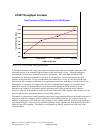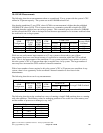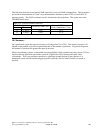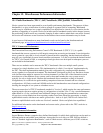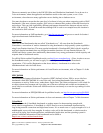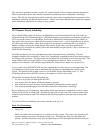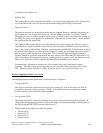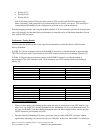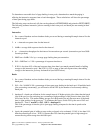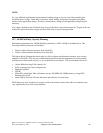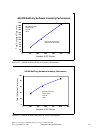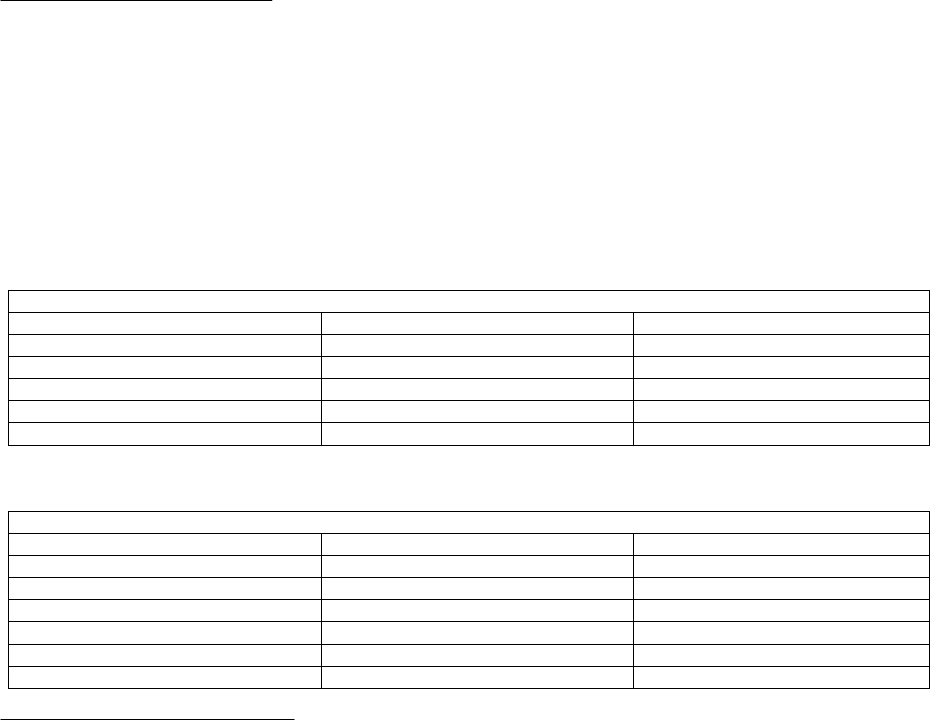
y Priority 47-51
y Priority 52-89
y Priority 90-99
Jobs in the same group will have the same resource (CPU seconds and Disk I/O requests) usage
limits. Internally, each group will be associated with one set of delay cost curves. This would give
some preferential treatment to jobs of higher user priorities at low system utilization.
With this mapping scheme, and using the default priorities of 20 for interactive jobs and 50 for batch jobs,
users will generally see that the relative performance for interactive jobs will be better than that of batch
jobs, without CPU starvation.
Performance Testing Results
Following are the detailed results of two specific measurements to show the effects of the Dynamic
Priority Scheduler:
In Table 19.1, the environment consists of the RAMP-C interactive workload running at approximately
70% CPU utilization with 120 workstations and a CPU intensive interactive job running at priority 20.
In Table 19.2 below, the environment consists of the RAMP-C interactive workload running at
approximately 70% CPU utilization with 120 workstations and a CPU intensive batch job running at
priority 50.
28.9%21.9%Priority 20 CPU Intensive Job CPU
0.750.32RAMP-C Average Response Time
5695160845RAMP-C Transactions per Hour
82.2%77.6%Interactive CPU Utilization
97.8%93.9%Total CPU Utilization
QDYNPTYSCD = ‘0’QDYNPTYSCD = ‘1’ (ON)
Table 19.1. Effect of Dynamic Priority Scheduling: Interactive Only
01:07:4001:06:52Batch Priority 50 Job Run Time
14.5%15.0%Batch Priority 50 Job CPU
0.210.30RAMP-C Average Response Time
6169261083RAMP-C Transactions per Hour
57.2%56.3%Interactive CPU Utilization
90.0%89.7%Total CPU Utilization
QDYNPTYSCD = ‘0’QDYNPTYSCD = ‘1’ (ON)
Table 19.2. Effect of Dynamic Priority Scheduling: Interactive and Batch
Conclusions/Recommendations
y When you have many jobs running on the system and want to ensure that no one CPU intensive job
'takes over' (see Table 19.1 above), Dynamic Priority Scheduling will give you the desired result. In
this case, the RAMP-C jobs have higher transaction rates and faster response times, and the priority
20 CPU intensive job consumes less CPU.
y Dynamic Priority Scheduling will ensure your batch jobs get some of the CPU resources without
significantly impacting your interactive jobs (see Table 96). In this case, the RAMP-C workload gets
IBM i 6.1 Performance Capabilities Reference - January/April/October 2008
© Copyright IBM Corp. 2008 Chapter 19 - Misc Perf Information 305




